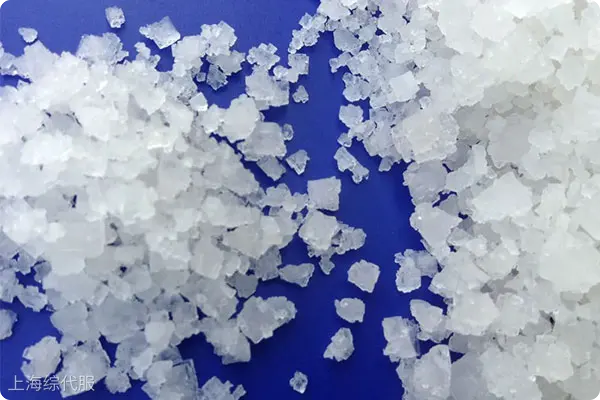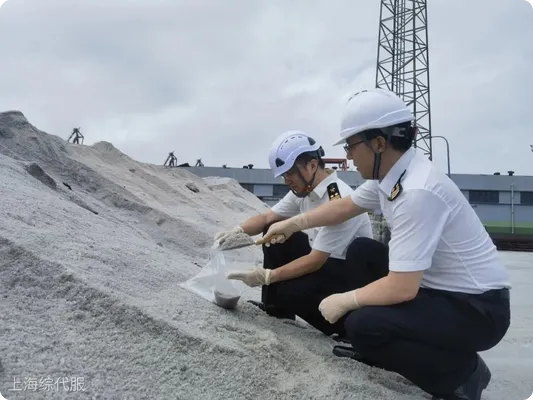In today’s society, industrial salt plays a crucial role in chemical production, but its import process is complex and strictly regulated. So what regulations must be followed to ensure compliance and safety?This article will provide a comprehensive detailed description of the definition of industrial salt, the requirement for refining indicators in the import process, as well as the differences with edible salt, and an in-depth explanation of the declaration and inspection regulatory process for imported industrial salt.

Definition and Classification of Industrial Salt
Industrial salt, according to the Industrial Salt (GB/T 5462-2015) standard, refers mainly to industrial salts derived from sea water, lake salt, saltwater, rock salt or underground saltwater.It is mainly used for the production of chemical products such as salic acid, chlorine, chlorine and chlorine gas, but also widely used in organic synthesis, ceramic and glass production, oil drilling and other fields.
Industrial salt according to different processing techniques, can be divided into sunshine industrial salt and refined industrial salt. Sunshine industrial salt is mainly obtained by natural drying, while refined industrial salt needs to undergo further drying and purification process. These two types of industrial salt have their respective characteristics and fields of application in use.
| Indicators | Unity | Preferred industrial salt | High industrial salt. | Secondary industrial salt | Priority Industrial Salt | Industrial salt day. | Secondary Industrial Salt | Industrial salt | Industrial salt |
|---|---|---|---|---|---|---|---|---|---|
| and sodium chloride. | G to 100g | 99.1 | 98.5 | 97.5 | 96.0 | 95.0 | 93.3 | 96.2 | 94.8 |
| The Water | G to 100g | ≤ 0.30 | ≤ 0.50 of | ≤ 0.80 of | ≤ 3.00 | ≤ 3.50 | ≤ 4 hours | 2.80 | 3.80 |
| water insoluble | G to 100g | ≤ 0.05 | ≤ 0.10 | ≤ 0.20 | ≤ 0.05 | ≤ 0.10 | ≤ 0.20 | 0.20 | 0.30 |
| Total amount of calcium. | G to 100g | ≤ 0.25 | by ≤0.40 | by ≤0.60 | ≤ 0.30 | ≤ 0.50 of | ≤ 0.70 | 0.30 | 0.40 |
| oxygen is | G to 100g | ≤ 0.30 | ≤ 0.50 of | by ≤0.90 | ≤ 0.50 of | ≤ 0.70 | ≤ 1 hour | 0.50 | 0.70 |
Indicators of industrial salt
When importing industrial salt, it is crucial to understand its rationalization indicators, which are not only related to the quality of industrial salt, but also directly affect the performance of the final product. Common rationalization indicators include sodium chloride content, moisture, water insoluble and total calcium ions. These indicators will serve as an important basis for determining the quality of industrial salt in the customs inspection process.
For example, sodium chloride content is a key indicator for evaluating the quality of industrial salt, and high-quality industrial sodium chloride content is usually higher.In addition, the content of moisture and water-soluble substances should also be controlled within a certain range to ensure the effectiveness and safety of industrial salt in actual use.
Difference Between Industrial Salt and Eating Salt
| species | Form of appearance | Contents of sodium chloride (g/100g) | Main types and uses |
|---|---|---|---|
| The Industrial Salt | White, microred or blue-white crystals | 2 92.00 | Industrial salt, refined industrial salt |
| Eating salt | The white crystal. | 297.00 | Refined salt, crushed salt. |
Declaration and regulatory processes for imported industrial salt
Importing industrial salt involves a range of complex declaration and regulatory processes, and understanding and following these processes correctly is key to ensuring smooth imports.
1 Requirements for Declaration:
Before importing industrial salt, enterprises must submit detailed declaration information to the Chinese Customs, including import goods declaration forms, certificates of origin, trade contracts, filings, packing forms and invoices, etc. All declaration information must ensure completeness, validity and consistency.
2 Inspection and supervision:
Customs will conduct a thorough inspection of the supplied certificates and may conduct on-site inspection of industrial salt. The content of the inspection includes the compliance of the goods certificate, the perfect packaging and whether there is any prohibited goods. If necessary, the customs will also take samples for safety and quality testing to ensure that industrial salt complies with national standards and import requirements.

Results of judgment and treatment:
If the results of the inspection show that industrial salt meets all the requirements, the customs will issue the Certificate of Entry Goods Inspection, allowing the goods to be released.If the results of the inspection are not suitable, the customs will handle according to the specific circumstances, which may include the return of the country of origin or destruction.
In summary, although the process of importing industrial salt is complex, by strictly adhering to the above guidelines, enterprises can effectively manage their import processes and ensure compliance while also protecting public and environmental safety.In addition, transparent operation and good supply chain management are also crucial to avoid unnecessary delays and costs.Through these measures, enterprises can not only ensure the smooth running of business, but also provide a stable supply of raw materials for domestic industrial production.


 Follow customer service WeChat
Follow customer service WeChat